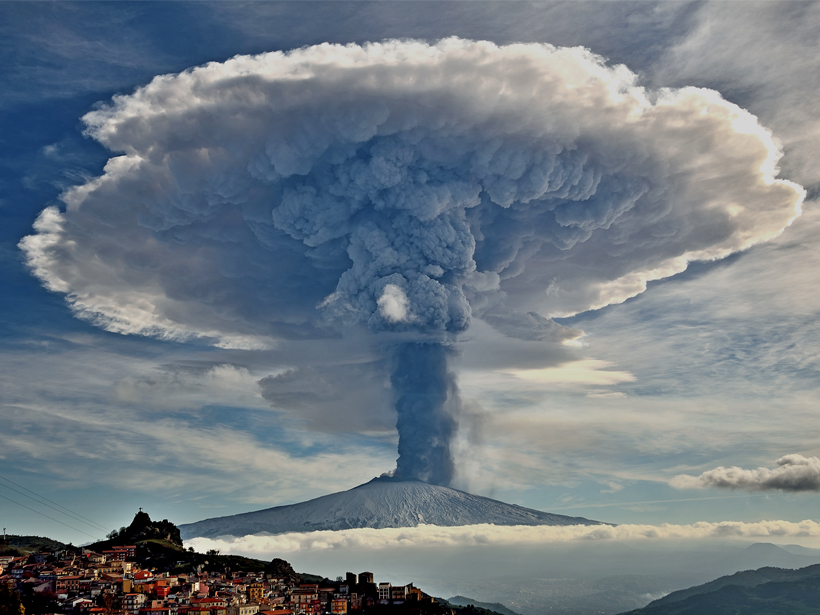Source: Journal of Geophysical Research: Solid Earth
On 24 November 2006, Mount Etna—located in Sicily, Italy—erupted, releasing a thick plume of volcanic ash. The eruption shut down Fontanarossa Airport, Sicily’s second largest, located 48 kilometers away. Similar plumes occurred again in December 2015.
Volcanic ash affects not only air transit but also public health and agriculture in nearby communities. How particles scatter after an eruption is incredibly complex and chaotic because of the different behavior of particles of different size and the uncertain distribution of particles at the source. Some particles can linger in the air for just a few minutes, whereas others can remain airborne for years, traveling thousands of miles around the world. Here Pardini et al. investigate how particles from a volcanic plume disperse and what factors govern the uncertainties associated with dispersal.

The researchers performed their calculations on the basis of the conditions of the 2006 eruption of Mount Etna. Using a Lagrangian particle dispersal model, which computes the trajectories of a large numbers of volcanic particles on the basis of their physical properties, the researchers investigated how uncertainty in the initial size distribution of particles and their sphericity—a measure of how round an object is—affected how each particle scattered following a volcanic eruption. This model also accounted for realistic conditions such as wind.
The scientists found that the uncertainty in the distribution of particles greatly reduces with distance from the source because of the effective segregation imposed by the atmospheric dispersal process. Moreover, rounder pieces of volcanic ash experienced less drag in the air, so they slipped out of the atmosphere sooner and didn’t travel as far. Conversely, particles that weren’t as spherical experienced more drag and remained in the atmosphere longer. As a consequence, sphericity mostly controls the grain size distribution at a given distance from the source. The authors also found much more variation in the size of particles that stayed aloft compared with those on the ground.
Although the study was based on a weak plume event during the Mount Etna eruption in November 2006, the authors say that the method used in this study can also be applied to investigate particle scattering from larger plumes.
This study determined variables that control particle scattering, which, according to the authors, warrant more analysis so that models that examine similar phenomena can be further refined. (Journal of Geophysical Research: Solid Earth, doi:10.1002/2015JB012536, 2016)
—Wudan Yan, Freelance Writer
Citation: Yan, W. (2016), Can we predict how volcanic ash disperses after an eruption?, Eos, 97, doi:10.1029/2016EO046523. Published on 23 February 2016.
Text © 2016. The authors. CC BY-NC 3.0
Except where otherwise noted, images are subject to copyright. Any reuse without express permission from the copyright owner is prohibited.

